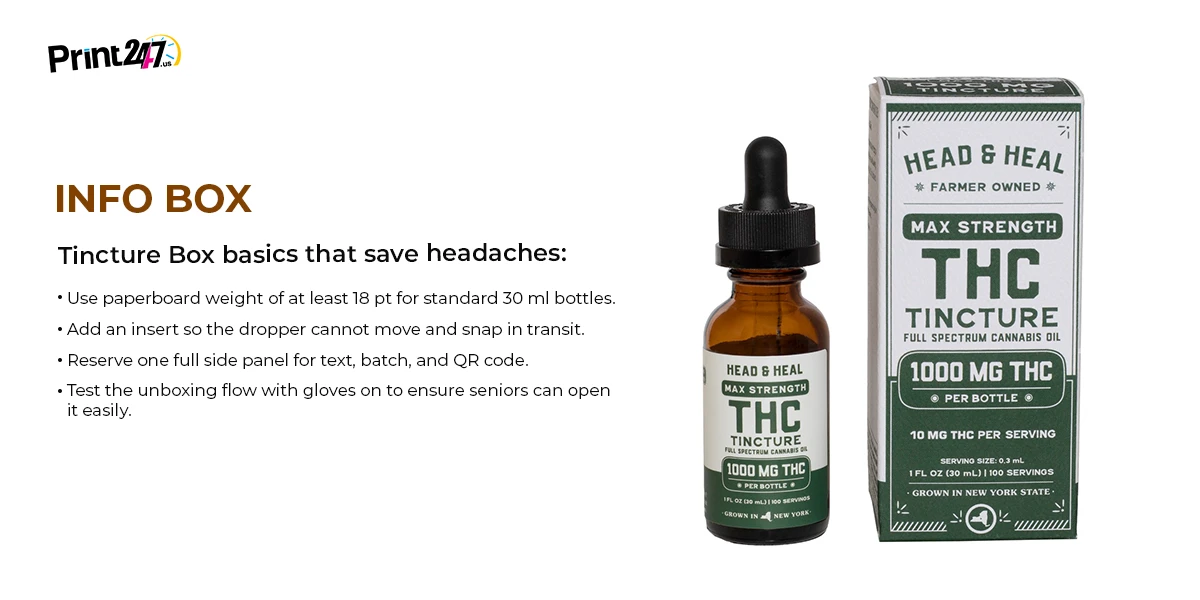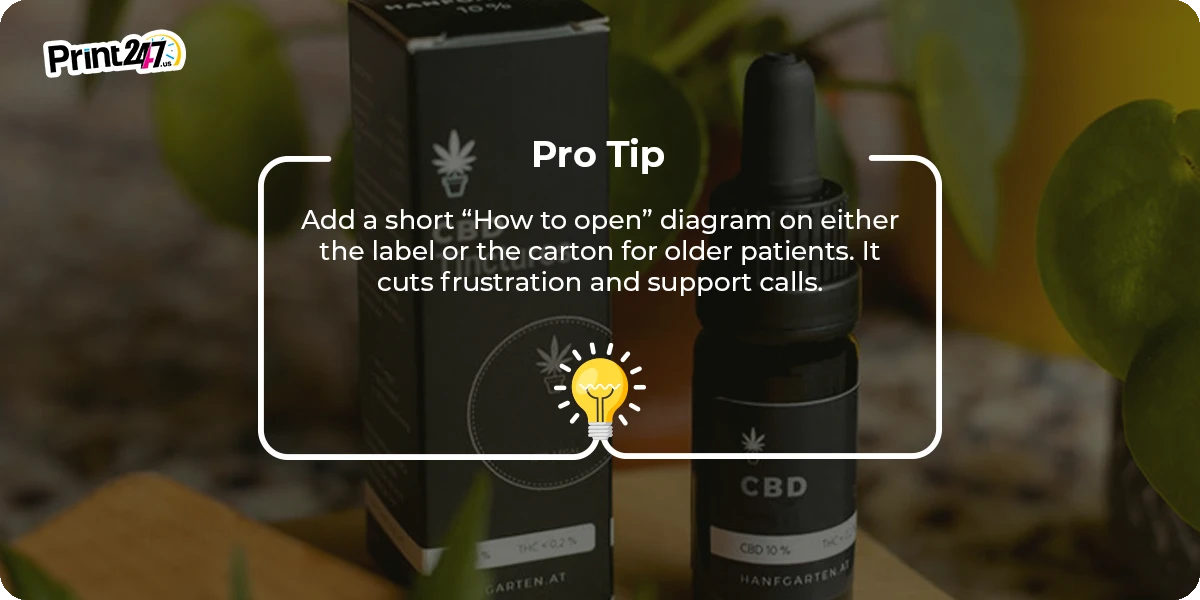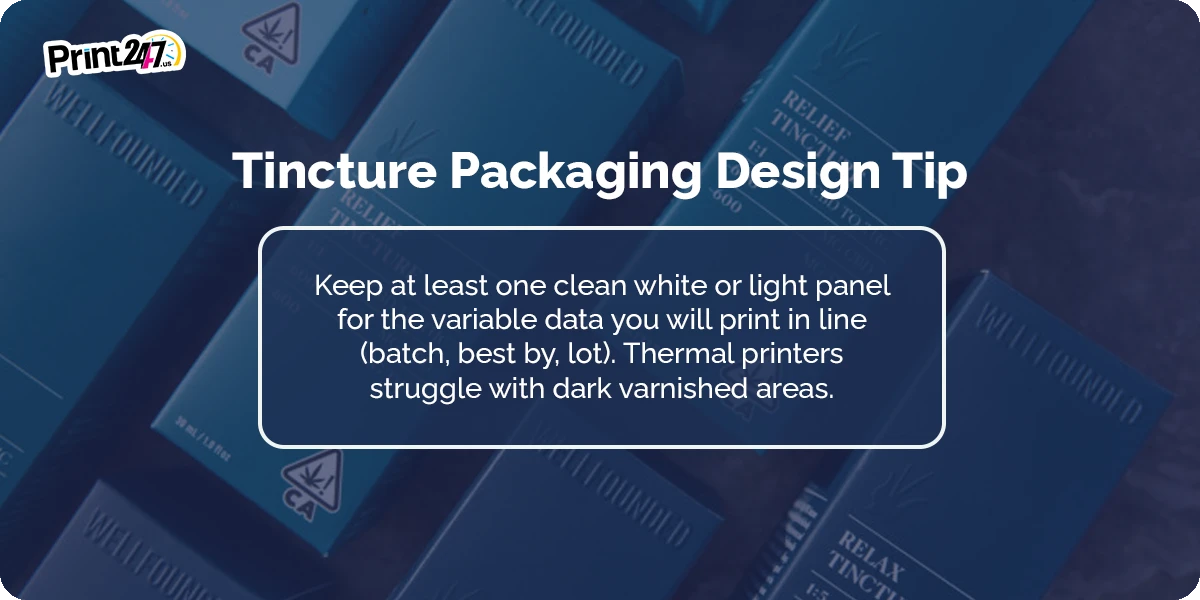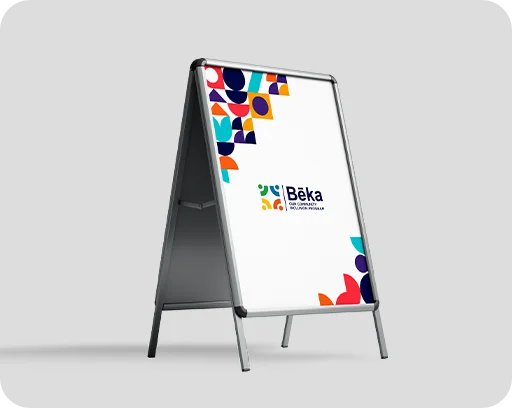10 Tips for Packaging Cannabis Tinctures
.jpg)
The safest and most reliable cannabis tincture packaging uses amber glass dropper bottles, certified child-resistant and tamper-evident tincture boxes, clear compliant labels, UV protection, and sturdy paperboard boxes with inserts to stop leaks and breakage.
Great cannabis tinctures start with great formulas, but they stay great because of smart packaging. If your bottle leaks, if light hits the cannabinoids, or if your label misses a legal line, you risk returns, fines, or worse, harm to a customer.
We have written this comprehensive blog to guide you through every step with plain talk. No fluff. No tricky words. During this course, you'll learn how to pick the right bottle, seal it the right way, follow state rules, and still build a brand people remember.
At the end, you'll have a complete checklist you can hand to your team, your printer, or your copacker and instruct them to do it this way.
Overview of Tincture Boxes Packaging
Tincture boxes do much more than look nice on a shelf. It keeps light out, protects fragile glass, carries your legal copy, and provides space for you to educate the buyer. The reason most brands choose paperboard cartons is that they are strong, light, and easy to print.
Custom inserts made of paperboard or molded pulp grip the dropper bottle to prevent it from shaking, chipping, or breaking during transit. For online orders, a carton inside a mail‑ready shipper with corner padding can be the difference between a 5-star review and a refund request.
When you plan the box, think about:
Compliance space: Warnings, universal THC symbol, net contents, license number, THC per serving, QR to COA.
User help: Storage advice, dosing chart, shake well notice, serving icon set.
Brand clarity: The law text should be presented in a strong contrast that is clean, without effects that make it difficult to read.
Sustainability: Produced with FSC paper, inks that are water-based or soy-based, and minimal foil to keep it recyclable.
Security: Seals, tear strips, or stickers that indicate whether a box has been opened.
If your tincture line includes different strengths, flavors, or minor cannabinoids, design a color system and front panel grid that lets buyers tell them apart fast. It reduces the chance that a budtender or a fulfillment picker ships the wrong SKU.

10 Key Tips for Packaging Cannabis Tinctures
Packaging cannabis tinctures is a chain. Any one link can fail, and the chain as a whole can break. Put the bottle in child-proof packaging, seal it so that it is tamper-proof, print a clean label, and wrap everything in a protective, brand-named, and regulatory-compliant box. The following are ten easy-to-follow tips that you can start using right away.
Tip #1: Choose the right bottle material and color to protect cannabinoids
Glass beats plastic for most tinctures. The material is non-reactive, keeps its shape even when heated, and keeps flavors pure. The main reason why amber glass is so popular is that it helps block UV light, which can break down THC and CBD. Amber is the best choice if your product will be displayed near windows or in brightly lit stores. Clear glass can still work, but then you need UV-blocking labels, sleeves, or strong outer boxes. If you use plastic at all, confirm it passes migration tests with your exact formula, especially if it contains ethanol.
What to ask your bottle supplier:
Do you have stability or migration data for ethanol-based tinctures
What is the color variance tolerance from batch to batch
Are the neck and thread dimensions tight enough to match our cap closure
Sizing tip:
Sizes of 30 ml (1 ounce) and 60 ml (2 ounces) are the most common. Make inserts, cartons, and shipping trays the same size for the whole line.
Tip #2: Use certified child-resistant closures that match your bottle
Most legal markets say you must keep kids out. That means child-resistant (CR) caps tested and certified under CPSC or ISO standards. Do not mix a CR cap from one vendor with a random bottle from another unless they were tested together. The whole system needs to pass, not just the cap.
Look for:
Push and turn or squeeze and turn styles with clear open instructions
A liner (foam or induction) that also helps with leak control
Senior-friendly design backed by test data

Tip #3: Add tamper-evident protection so buyers know it is safe
A buyer should be able to tell at a glance if someone opened the cannabis tincture boxes before them. A shrink band around the neck, a tear strip, or an induction seal under the cap all work. Many brands use two layers for extra trust: a shrink band plus an induction seal.
Tamper-evident feature benefits:
Strong oxygen and moisture barrier
Cleaner look than pressure-sensitive seals
Lower leak risk during shipping
You should ensure that your capping line is set up with the right heat and pressure to ensure the foil bonds to the rim. Each lot should be tested for seals.
Tip #4: Control light and oxygen to extend shelf life
Light, heat, and air are the main enemies of cannabinoids. You can slow them down with amber glass, UV-blocking sleeves, opaque labels, and tight seals. Oxygen can sneak in if your liner is weak or your torque is off. Test your closure system by placing filled bottles on their side for 48 hours and checking for seepage.
Simple light safety plan:
Amber or cobalt glass as standard
Opaque paperboard cartons for every unit
Store advice printed: keep in a cool, dark place, tightly closed
If you sell higher doses for medical users, call out the storage line near the dosage chart so it is not missed.
Tip #5: Write labels that pass audits and help real users
Tincture labels cause more fines than bottles ever will. You need to cover THC per serving, total THC per container, net contents, batch and lot numbers, license number, manufacture or pack date, warnings, universal symbols, and often a QR code that is sent to the COA. Minimum font sizes and panel placements are common rules. Keep all legal text in a high contrast color so it is easy to read. You can also read our article about packaging and labelling requirements for tincture boxes.
Compliance quick list to print and pin on the wall:
THC per serving and per package
Universal THC symbol where needed
Batch, lot, and COA link or QR
License number and manufacturer info
Required warnings in the right font size

Tip #6: Make dosing simple with graduated droppers and charts
People love tinctures because they can control the dose. Help them do that with graduated droppers marked at 0.25 ml steps. Include a chart on the packaging or insert of your cannabis tincture box that shows the milligrams per ml for 0.25, 0.5, 0.75, and 1 ml. As an example, if one ml is equivalent to 20 mg of THC, then 0.5 ml is equivalent to 10 mg of THC as well. The new user won't have to do math in their head if you write it out.
Extra dosing help:
Use icons for morning, evening, or bedtime if your market allows
If the tincture is thick, select a wider bore pipette
Tell users to shake well if the formula can separate
Run a fill test at the line to verify that the printed marks match the true volume. Errors here cause dosing confusion.
Tip #7: Stop leaks with the right liner, torque, and transit tests
Leaking tincture waste product, hurt reviews, and can ruin the whole cannabis tincture packaging experience. Your goal is a tight seal with no seepage even when the bottle lies on its side, sits in a hot truck, or gets dropped.
Your leak prevention plan:
Pick the right liner (foam, induction, or pressure sensitive) for your cap
Set and monitor torque on the capping machine each shift
Do heat, drop, and side lay tests on every new batch of bottles and caps
Use inserts inside cartons to keep the dropper upright
If you ship to hot areas, test at higher temperatures. Heat thins liquids and can reveal weak seals that look fine at room temperature.
Tip #8: Go eco-friendly where it makes sense without losing safety
Buyers care about waste, and so do many regulators. You can lower impact with PCR glass, lightweight glass to cut freight weight, FSC paperboard, soy or water-based inks, and paperboard inserts instead of plastic trays. Be honest on your labels. If the dropper and cap are not recyclable in your area, say it. Add a small how-to-recycle panel that tells users to rinse the bottle before they toss it in the bin. You can buy eco-friendly CBD packaging from the best packaging suppliers like Print247 and promote a greener future.
Easy wins:
Standardize bottle sizes to reduce tooling and scrap
Print with minimal foil and effects so cartons can be recycled
Offer a take-back program if your local rules allow
Make sure any eco move does not reduce child resistance or barrier strength.
Tip #9: Print storage, handling, and best-by dates right where people see them
A simple storage line can save your product from heat and light damage. Print “Store in a cool, dark place. Keep tightly closed” near your dose chart or warning block on your cannabis tincture boxes. If you have stability data, add a best-by or use-by date. Tell users to shake well before use if needed. If ethanol is in the formula, note it on the label so sensitive users know.
Placement Tip:
Variable data like batch, lot, and best by should sit on a flat, uncoated, or matte area so printing is crisp and does not smudge.
Tip #10: Use your tincture box to build trust, guide use, and grow repeat buys
Your tincture packaging box is a mini billboard in the store and a user guide at home. Use it well. Keep the front panel clean with the strain or formula name, strength, and net contents. Use a side panel for a short, plain dosing guide, storage line, and QR to lab tests. Use color blocks or icons to separate SKUs. Add soft touch, spot UV, or emboss only if rules allow and they do not hide required text.
Brand and trust ideas:
Put a short thank-you note or brand promise inside the flap
Add a one-line “We test every batch. Scan for COA.” near the QR
Keep design consistent across sizes and flavors to avoid picker errors
These ten tips work together. The right bottle, a secure cap, a seal, a label, packaging, and clear communication with your user are all crucial. With that in place, you will be able to sleep better at night, your customers will always receive a steady dose, and regulators will have fewer reasons to contact you.
Conclusion
Safe cannabis tincture packaging is not guesswork. Start with amber glass to guard against light. Use certified child-resistant caps that match your bottle. Add tamper evidence so buyers trust what they are holding.
Write labels that pass audits and help real people measure a dose without stress. Seal for oxygen and leak control, run simple heat and drop tests, and ship in well-built paperboard boxes with inserts.
If you can do all of that while using FSC paper and PCR glass, even better. The end result is a clean, stable tincture that looks good, stays safe, and keeps your brand off compliance watch lists. Buy cannabis tincture boxes at Print247 that are eco-friendly and comply with the rules and regulations.
FAQs
What bottle size is most common for cannabis tinctures?
Most brands use 30 ml (1 oz) and 60 ml (2 oz) bottles. These sizes balance dose control, shipping cost, and shelf space. Sticking to one family of sizes lets you reuse inserts, cartons, and shipper trays which lowers cost and speeds up packing.
Do all states require child-resistant tincture packaging
Most legal states do. The rules can vary on test standards, label wording, and which parts must be CR. Always read the latest state regs before ordering caps or printing labels. When in doubt, pick a closure with CPSC or ISO CR certification.
How do I prove my package is tamper-evident?
Add a seal that breaks in a way that cannot be hidden. Shrink bands, induction seals, and tear strips are common. Keep a record of the seal type and show it in your SOPs. Inspect random units per batch and log results.
What should my tincture label include to stay compliant?
At minimum, list THC per serving, total THC per container, net contents, batch and lot number, license number, required warnings, universal symbol if needed, and a way to reach the COA, such as a QR code. Follow minimum font sizes and contrast rules.
Why is amber glass better than clear for tinctures?
Amber glass helps block UV light, which can break down cannabinoids and degrade flavor. It is not perfect, but it cuts light exposure a lot. If you must use clear glass for visual reasons, add UV-blocking sleeves or strong secondary boxes.
How can I reduce leaks during shipping?
Match the right liner to your cap, set the torque to spec, and test bottles on their sides under heat. Use paperboard inserts or molded pulp trays to stop movement. If you still see leaks, try induction seals since they create a tighter bond at the rim.
Can I make my tincture packaging eco-friendly without losing safety?
Yes. Use PCR glass, FSC paperboard, and water-based inks. Replace plastic inserts with paperboard or pulp. Do not skip child resistance or barrier strength. Tell customers exactly how to recycle each component.
Do I need a dosing chart on the box?
It is not always required by law, but it helps users and cuts support emails. A simple chart that shows ml to mg based on your potency makes dosing clear. Pair it with a graduated dropper for best results.
What is the best way to show lab results?
A QR code that links to the batch COA is fast and clean. Make sure the page is mobile friendly, shows batch numbers clearly, and stays live for as long as the product could be in the market.


















































.jpg)
.jpg)
.jpg)